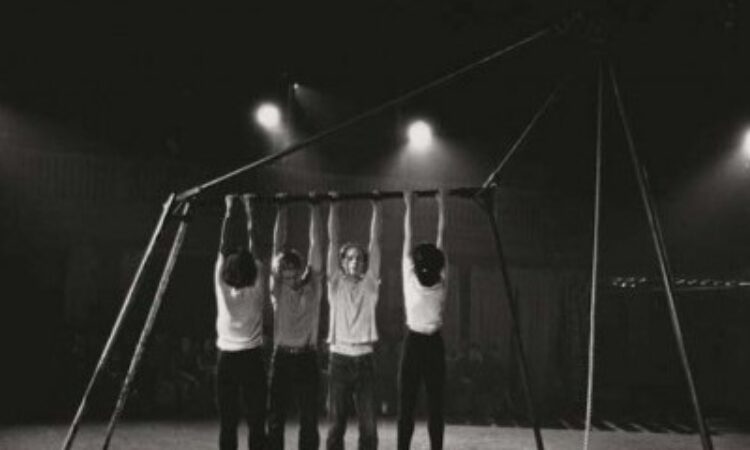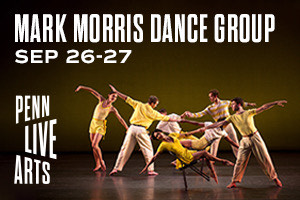The Judson Dance Theater’s place in history can be confused for mythology; it existed for a few years in the 1960s as the heart of New York’s art and performance scenes, and then dispersed as quickly as it arrived. The group had no manifesto, no official beginning or end. Brilliant and curious artists came together and dispersed a few years later, and in between a great deal of postmodern performance was born.
Judson Dance Theater: The Work Is Never Done — a collection of essays, photographs, and archival materials that accompany the 2018 Museum of Modern Art exhibit of the same name — is the latest history of the famed group of artists. Both the exhibit and text grapple with the inherent ephemerality of dance history, but their task is significantly more difficult given the nature of the works and aesthetics that defined the Judson Church Dance Theater.
Foundational influences like Anna Halprin, Robert Dunn, James Waring, John Cage, and Merce Cunningham, induced collisions between long-standing traditions of technique and practices of chance, indeterminacy, improvisation, audience interaction and participation, task, and more. As such, the Judson Dance Theater’s legacy is one that resists if not outright rejects formal documentation. As Julia Robinson puts it in her essay “From Snapshots to Physical Things,” Judson was an “ephemeral chapter in a famously dematerialized decade.” (p. 53)
The book, then, is quite an admirable addition to the scholarship and memory of the iconic church and the artists it championed. Edited by Ana Janevski, Thomas J. Lax, and Martha Joseph, curators of the MoMA exhibition, the first half is a collection of essays that tend toward a dense, academic approach. Thankfully (and effectively), the essays are rather brief, and thus a great array of scholarship and history is covered in a well-packaged series of short essays with copious footnotes.
Much of what positioned Judson as iconoclastic in its time is today taken as a given. How any gesture — washing the dishes, crying, walking, and on and on — is considered fair game for choreography. How an object on stage can be as dynamic and interesting as a person. How a stage is wherever you decide to move.
Judson didn’t single-handedly create these concepts, but its scant years of omni-directional experimentation proved to be an inflection point. In this sense “Judson” was a set of conditions wherein existing practices and forms were welcomed and then transformed: Merce Cunningham’s affect-less approach; John Cage’s indeterminacy; Anna Halprin’s removal of gesture from narrative. Postmodern performance, easily dismissed (and celebrated!) as a renunciation and/or deconstruction of everything, oversimplifies the point.
The book frequently cites the artists’ sense of community and democratic art making. Gone was the choreographer as the hierarchical apex, replaced with improvisations, ensembles, everyday tasks recast as choreography, non-dancers on stage, and more. While the book connects some of these practices back to Halprin and others, it unfortunately misses a crucial area of research best represented by Ellen Graff’s indispensable book Stepping Left: Dance and Politics in New York City, 1928–1942. Graff draws a line from radical leftists and the Soviet Union to the birth of modern dance. It’s a particular shame since the Judson book clearly details how integral Pastor Al Carmines was to Judson and its conditions for innovation. Carmines’s views on art and civil rights were radical and far-reaching, and would likely fit right in with the trajectory of modern dance as charted by Graff.
The middle section of the book contains several beautiful photography portfolios, all in black and white, with many dancers either caught mid-motion or in soft focus — a poetic underlining of the difficulty of cataloguing the performances themselves.
Hand-written scores, photographs, performance photos, and other ephemera make up the final section in a wonderfully laid-out progression that is half essay, half exhibit. (In fact, I wouldn’t be surprised if this section was indeed part of the physical exhibit at the museum.) It is divided by specific performances, and each description delves a little deeper into the people and practices that made up Judson Dance Theater. The joy, enthusiasm, and vigor is palpable. At its best, The Work Is Never Done brings you as close as possible to the people that made up Judson, not just its ideas — and as Malik Gaines so beautifully concludes his essay “Real People” (p. 67):
The group’s practical sociality, aesthetics of regularity, negotiations of modernity, and the unassuming radicality this all produced suggest ways we may continue to manage our own overwhelming subjectivity while, following Pastor Carmines’s lead, building the affiliations of cooperative subjecthood that people need, not only to dance, but to survive.
Ana Janevski, Thomas J. Lax, and Martha Joseph, Judson Dance Theater: The Work Is Never Done. New York: The Museum of Modern Art, 2018. 200 pp.






